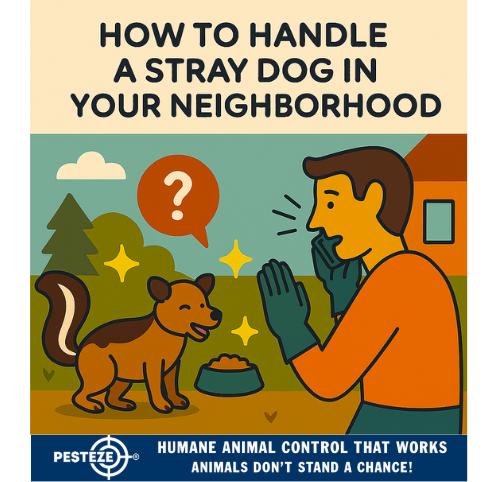HOW TO HANDLE A STRAY DOG IN YOUR NEIGHBORHOOD

HOW TO HANDLE A STRAY DOG IN YOUR NEIGHBORHOOD
SUMMARY
Encountering a stray dog in your neighborhood can be unsettling, but with the right approach, you can help the animal and keep your community safe. Stray dogs may be lost, abandoned, or feral, and handling them requires caution, compassion, and awareness of local resources. This guide outlines safe, humane steps to assess the situation, protect yourself and others, and connect with animal services. Acting responsibly can make a big difference for the dog and your neighborhood.
FEATURES
-
Observe Behavior from a Distance: Watch for signs of fear, aggression, or injury before approaching.
-
Avoid Sudden Movements or Loud Noises: Stay calm and speak softly to avoid startling the dog.
-
Check for Identification: Look for tags or collars if the dog appears friendly and allows close contact.
-
Provide Food and Water Safely: Offer nourishment in an open area to build trust without encouraging dependency.
-
Contact Animal Control or Local Shelters: Report the sighting and request assistance from professionals.
-
Share on Community Platforms: Post photos and details online to help locate the dog’s owner or find support.
GUIDE DESCRIPTION
Stray dogs can pose risks to themselves and others, especially if they’re scared, sick, or aggressive. Responding with care and caution is key to ensuring a safe outcome for everyone involved.
Start by observing the dog from a distance. Note its body language—does it seem relaxed, anxious, or defensive? Avoid approaching too quickly, as this can trigger fear or aggression. Keep pets and children away until the situation is under control.
If the dog seems approachable, speak softly and move slowly. Avoid direct eye contact and sudden gestures. If the dog allows it, check for a collar or ID tag. This may help you contact the owner directly or provide useful information to animal services.
Offering food and water can help build trust, especially if the dog appears malnourished. Place bowls in a quiet, open area and observe from a distance. Avoid feeding indoors or in enclosed spaces, which may make the dog feel trapped.
Contact local animal control, shelters, or rescue organizations. They can assess the situation, scan for a microchip, and provide safe transport if needed. Reporting the sighting also helps track stray populations and prevent future incidents.
Use community platforms like Nextdoor, Facebook, or local lost pet groups to share photos and details. Include the location, time of sighting, and any distinguishing features. This increases the chances of reuniting the dog with its owner or finding a foster home.
By taking these steps, you’ll help ensure the stray dog receives the care it needs while keeping your neighborhood safe and informed.
- Amy Chang


Comments 0